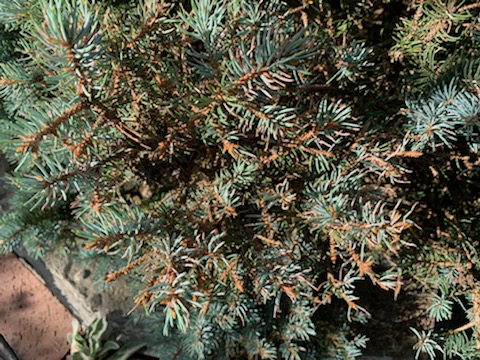By Sandra Nelson
Hanging like little Christmas ornaments from their host plants, these benign looking sacs are home to one of the more formidable insect enemies of the summer.
BAGWORMS
Bagworms, or more precisely Thyridopteryx ephemeraformis, feed on over 128 different species of common landscaping plants. Among their favorites are arborvitae, junipers, fir, spruce, pine, hemlock, maples, oak, sweet gum and honeylocust. Because they can move from place to place while living in their sacs, foraging larvae can quickly defoliate a host plant, severely weakening and often killing it.
If female bagworms were human, they would be labeled as hermits because they never leave their sacs. They are soft-bodies, yellowish- white maggot like creatures.
Each mated female hosts between 300 and 1000 eggs in her sac, then promptly dies. The eggs, which remain inside the deceased mother, incubate over winter, hatch as brown caterpillars the following spring — usually late May or early June — and immediately begin forming the familiar bagworm sacs.
Interestingly, the sacs are designed so that the caterpillars’ heads and legs are free, allowing the larvae to eat their fill and then move to fresh feeding grounds. As the larvae grow, they enlarge their sacs. By mid-August, they reach full size, about 1 to 2 inches, stop feeding, close up their sacs and attach themselves to a twig or branch. By mid-September, the larvae complete their development. Males emerge as black, furry moths with transparent wings. They hover around infested host plants, searching for females. After mating, the male moth dies.





